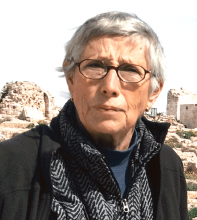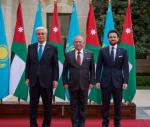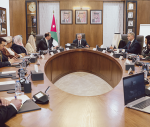You are here
IS, ‘the antithesis of Tahrir’
Oct 15,2014 - Last updated at Oct 15,2014
As the Islamic State continued to advance on the ground in Iraq and to hold its own in Syria, US President Barack Obama addressed senior allied military commanders in a bid to formulate a strategy for rolling back IS fighters.
Yet, talk is no substitute for serious action and bombing is no substitute for boots on the ground.
Neither in Syria nor in Iraq can the boots on the ground win against IS.
In Syria, government forces are stretched thin in their defence of the centre of the country against a host of insurgent groups.
In Iraq, the army is a broken force, the Kurdish peshmerga is suffering from overstretch, and the Shiite fundamentalist-dominated government continues to depend on Shiite militias that attack Sunni civilians, threatening to engulf the country in a sectarian civil war.
Meanwhile, IS fighters, who may now number 50,000, continue to battle local Kurdish militiamen in the Syrian town of Kobani, on the border with Turkey, and advance through the western Anbar province towards the gates of Baghdad.
The fall to IS of Anbar, the largest of Iraq’s provinces bordering Jordan, Saudi Arabia and Syria, could lead to IS infiltration into the first two. Syria is already a key base for IS.
Anbar was one of the chief battlegrounds during the insurgency against the 2003 US occupation and became a stronghold of Al Qaeda between 2006-08, until the US recruited Sunni “Awakening Council” fighters to counter the jihadists.
The Anbar Tribal Council, the most important Sunni tribal organisation in the province, backs Baghdad’s efforts to contain IS but warns that the situation is deteriorating due to the lack of government or US-allied support.
IS holds not only Fallujah and large parts of Ramadi, the provincial capital, but is also said to have moved into Abu Ghraib, a town just west of the capital, and IS infiltrators are held responsible for mounting a series of deadly bombings of mainly Shiite areas in the capital.
Although more than half a million residents of Anbar have been displaced since fighting commenced in late 2013, Baghdad made only a half-hearted effort to curb the IS drive and takeover.
IS units captured troops and seized arms and equipment well ahead of the army’s defeat in Mosul, in June, which served as a wake up call for Washington.
It is incredible that IS was allowed to secure solid territorial bases in both western Iraq and northern and eastern Syria without alarm bells sounding in Western and Arab capitals.
IS has held Raqqa in Syria since August 2013 and made it the capital of its self-declared “Islamic state”. It then battled other insurgents for control of Syria’s oil field province Deir Al Zour, on the Iraqi border.
Early this year, IS moved into Fallujah and Ramadi and fixed its grip on Anbar.
Was no one tracking its progress?
IS is not just one of the hundreds of insurgent factions operating in Syria and Iraq. It is not a group or a movement, but a cult, making it far more formidable than the militias involved in the struggle for Syria and Iraq.
Core IS fighters are imbued with what they consider to be a “purist” ideology and vision that they intend to impose by brute force on areas that fall under their control.
They are also licensed to commit mass murder, sectarian and ethnic cleansing, beheadings, kidnappings and sex slavery; recruit child soldiers; rob banks; and destroy cultural heritage.
As is the case with all cults, IS attracts cranks and misfits, criminals and drug users, psychotics and psychopaths, as well as true believers and opportunists.
As long as IS retains the offensive, maintains control of territory it has captured and carries on its social media campaign to win supporters and foot soldiers, it will remain a major threat to the existence of Syria and Iraq, the stability of the region, and the security of Western countries which have directly or indirectly colonised and abused Muslims.
The rise of IS is the final stage of a process began when the US and Saudi Arabia sponsored the mujahedeen war against the Soviet army in Afghanistan.
This led to the founding of Al Qaeda by Osama Ben Laden. His lieutenant, Abu Mussab Al Zarqawi, another veteran of the Afghan war, established Al Qaeda in Iraq during the US occupation and launched a campaign of suicide bombings, kidnappings and beheadings in Iraq, as well as strikes on hotels in Jordan.
Al Qaeda (the base, in Arabic) erected the framework for the emergence of IS, the end product of the transformation into a fanatical cult of a reactionary movement seeking vengeance against the West and a return to the verities of an imagined Islamic “golden age”.
The only way to tackle IS is to confront the issues which have, for decades, alienated and angered Muslims.
The issue that triggers Arab and Muslim hostility is Palestine.
It is no longer possible for the Western world to carry on as usual with Israel, which is occupying prime Arab real estate, geographically and politically dividing the Arab world, and abusing Palestine’s native population.
Israel’s latest war on Gaza revived Muslim antagonism and, combined with the IS military surge in Iraq, prompted angry young Muslims to join IS.
There is, of course, a host of other issues that drive Muslims into IS’ arms: lack of a decent education, unemployment, poverty and the longing for a cause.
The failure of the Arab Spring to bring about democracy and freedom is another major contributor.
The 18 days of Egypt’s Tahrir Square protests captured the attention and imagination of young Arabs and Muslims and raised expectations that political life in this region would change. When this did not happen, many idealists turned to the antithesis of Tahrir: IS.
Instead of a long, uncertain struggle for “bread, freedom and justice”, IS offered the certainty of a narrow, puritanical ideology, guns and an opportunity to wreak vengeance on the “enemies of Islam”.













